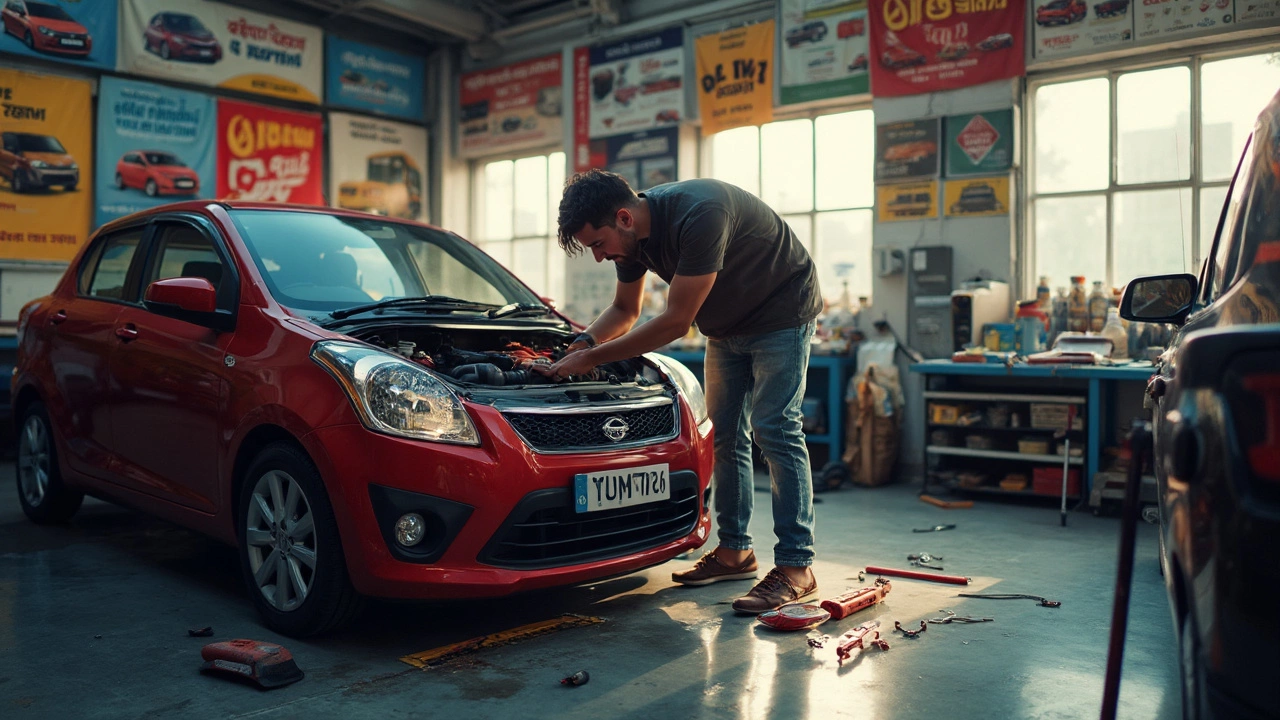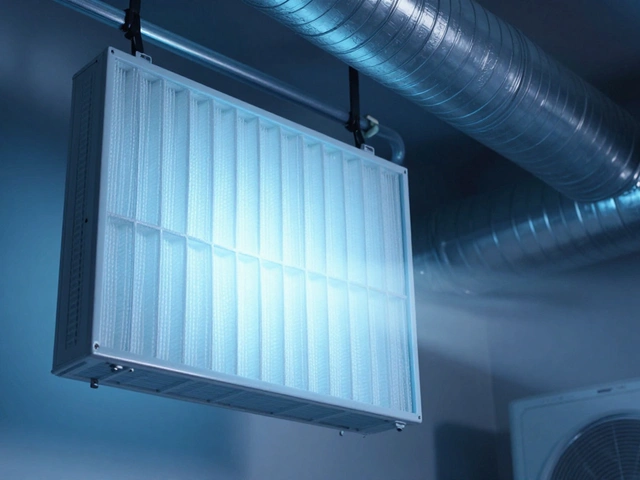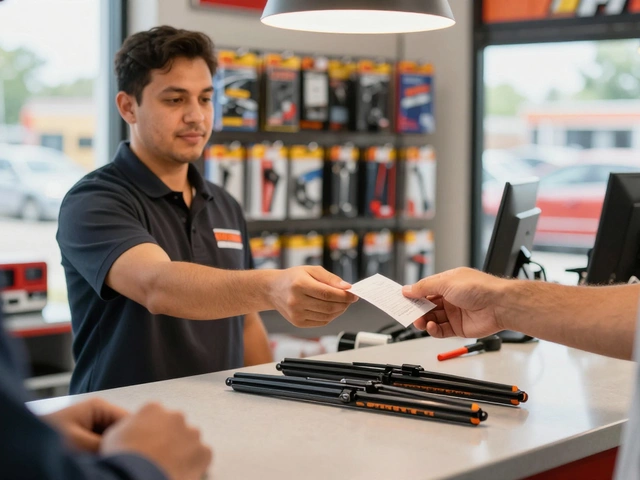If you're hoping a cold air intake is going to turn your commuter into a street monster, let's get real—it won't make your Civic outrun a Corvette. But can it give you a little more kick? Absolutely, and here's how it works in simple terms.
Cold air intakes pull cooler, denser air from outside your engine bay instead of letting your engine breathe in hot, thin air. Colder air holds more oxygen, and more oxygen means your engine can burn more fuel and make more power. But the boost you actually get depends on a few things, like your car's current setup, how restrictive the stock intake was, and even the weather where you live.
On most modern cars, you're looking at a gain of around 5 to 15 extra horsepower. That might not sound like a ton, but you can feel a smoother, quicker throttle response, especially if your engine was really getting choked up by the factory airbox. Pair it with a good exhaust system, and those gains add up a bit more.
- What Does a Cold Air Intake Actually Do?
- Realistic Horsepower Gains: Numbers and Factors
- Tips to Maximize Your Cold Air Intake Results
- Common Myths and Mistakes to Avoid
What Does a Cold Air Intake Actually Do?
A cold air intake is basically a swap for your factory air filter box and tubing. The main idea is to feed your engine cooler air from outside the engine bay, instead of letting it suck in the warmer air trapped under the hood. Colder air packs more oxygen, so the engine mixes in more fuel and ignites a bigger boom inside the cylinder. More oxygen equals more power—at least, in theory.
Most stock intake systems use narrow passages and lots of turns to keep things quiet and meet emissions rules, but that can slow down airflow. Cold air intakes usually give you:
- Straighter, wider pipes for smoother airflow
- A high-flow filter that lets in more air
- A design that pulls air from outside the engine bay—like near a wheel well
Wondering how much difference cooler air really makes? Air temperature can seriously affect power. Check this out:
| Air Temperature (°F) | Percieved Engine Power (%) |
|---|---|
| 32 | 106% |
| 68 (Room Temp) | 100% |
| 104 | 94% |
You can lose up to 6% of power just by feeding your engine hot air on a summer day. That’s where the cold air intake shines—it helps your engine breathe easier, especially when paired with other upgrades like a less restrictive exhaust or a performance tune.
Heads up though—while these intakes really do let the engine get more air, the amount of extra power totally depends on your car. If your ride is already pretty efficient, the bump is smaller. If it's choked up from the factory, you’ll notice a bit more kick.
Realistic Horsepower Gains: Numbers and Factors
So, how much horsepower does a cold air intake actually add? If you believe every ad or forum thread, you'd think it's a free ticket to monster horsepower. The truth is more down to earth. On most stock engines, you're looking at an average gain of about 5 to 15 horsepower, depending on the model and how restrictive the original intake was. Some performance-oriented engines—think Mustang GT, Camaro SS, or WRX—might squeeze out a bit more, but you're rarely cracking a 20 horsepower bump without other mods.
Take a look at some real-world data from actual dyno tests:
| Car Model | Stock HP | HP After Cold Air Intake | Gain |
|---|---|---|---|
| 2015 Ford Mustang GT | 435 | 446 | +11 |
| 2017 Honda Civic Si | 205 | 214 | +9 |
| 2020 Subaru WRX | 268 | 278 | +10 |
Of course, the bump in power depends on several things:
- Cold air intake quality: Not all kits are created equal. Cheap eBay intakes rarely live up to the hype. Look for ones with real engineering, like K&N or AEM.
- Engine type and tuning: Turbocharged engines tend to benefit a bit more, since cooler denser air lets the turbo push harder. Some cars even need a tune to unlock the intake's real potential.
- Rest of the intake and exhaust system: If your car's still choking on a stock exhaust, an intake by itself can only do so much. Upgrading the full system lets each part shine.
- Modern ECUs: Some new cars have ECUs that "learn" and adapt quickly. If your intake throws off the mix, you could see no gain or even a loss until a tune straightens things out.
- Temperature and altitude: Gains are a bit higher in hot climates because the air temp difference gets bigger, and cold air intakes usually matter more at higher RPM.
Want a tip? If your ride has a tiny engine or if the factory setup already pulls cool air, gains might be on the lower end. But if your engine's sucking hot air from the engine bay and the intake path is a maze of sound baffles, you might notice the upgrade.

Tips to Maximize Your Cold Air Intake Results
Want to really squeeze the most out of your cold air intake? Don’t just slap it on and call it a day. There’s some simple stuff you can do to bump up those gains and make that cold air intake really do its job.
- Match Your Intake With a Good Exhaust: The intake brings in more air, but your exhaust needs to let it out. A high-flow exhaust or even just a better muffler can let the engine breathe easier from both ends. This combo can help you see the higher end of the horsepower boost range, especially on older or more restricted engines.
- Keep Your Air Filter Clean: Sounds basic, but a dirty filter makes your new intake almost pointless. Check it every 5,000 miles or so, more often if you’re driving on dusty roads. Cleaning or replacing the filter keeps airflow strong and steady.
- Install a Heat Shield or Relocate the Intake: If your intake sits near a hot engine, it’s just sucking in warm air. Some kits come with a heat shield—use it. If not, think about custom mounting your intake to pull air from a cooler spot behind the bumper or fender.
- Reset Your ECU or Let It Relearn: Modern cars rely on the ECU to adjust fuel and timing. After installing your intake, disconnect the battery for a few minutes or drive for a week so the ECU can relearn and give you better performance.
- Tune for Maximum Gains: For the best bang, consider an engine tune. Custom tunes can make use of all the extra air and dial in fuel delivery, sometimes unlocking gains you won’t get otherwise.
How do these tips really translate to horsepower? Check out this quick table based on dyno-tested results from real installations, assuming your engine is in good shape:
| Upgrade Combo | Average HP Gain |
|---|---|
| Just Cold Air Intake | 5-10 HP |
| Cold Air Intake + High-Flow Exhaust | 10-18 HP |
| Intake + Exhaust + ECU Tune | 15-25 HP |
One thing almost everyone overlooks: double-check for air leaks at all connections. Even tiny leaks can ruin your gains and trigger check engine lights. Take a minute after install to make sure every clamp and hose is tight.
Common Myths and Mistakes to Avoid
There's a lot of hype when it comes to cold air intakes, but not everything you hear at a car meet or on forums is true. Let's clear up the biggest misunderstandings before you go spending your cash.
- Cold air intake kits do not guarantee “free” horsepower. Car magazines might have you thinking you’ll bolt on 30 HP from a $200 part. Realistically, 5–15 HP is the usual jump, if your car even gets close to the high end. Check out this quick chart from dyno tests on popular models:
| Car Model | Average Factory HP | Cold Air Intake HP Gain |
|---|---|---|
| Honda Civic Si (2018) | 205 | +6 |
| Ford Mustang GT (2016) | 435 | +12 |
| Subaru WRX (2021) | 268 | +8 |
| Chevrolet Camaro SS (2019) | 455 | +13 |
- Just slapping on a cold air intake doesn’t magically make your car faster. Sometimes, the engine control unit (ECU) needs a tune to make the most of the upgrade. Ignore this, and your gains might be less than nothing.
- Your car isn’t going to sound like a V8 just because the intake is making some whoosh noises. Some induction growl is typical (and fun), but don’t expect miracles in exhaust note changes.
- Location matters—a poorly placed intake can suck up water (hello, hydro-lock) and leave you with a dead engine. Never put the filter anywhere it can catch splash from puddles, and always check fitment instructions.
- Reuse your old filter or cheap out on maintenance? That’ll just clog airflow and actually hurt performance over time. Cleaning or replacing the filter as recommended is a must.
One more thing: claims about big fuel economy improvements are mostly marketing. If you drive heavy-footed to “enjoy” your new intake, any mpg gain is out the window. So yes, you can get a real bump in performance, just don’t fall for wild claims or skip proper installation steps.











Write a comment